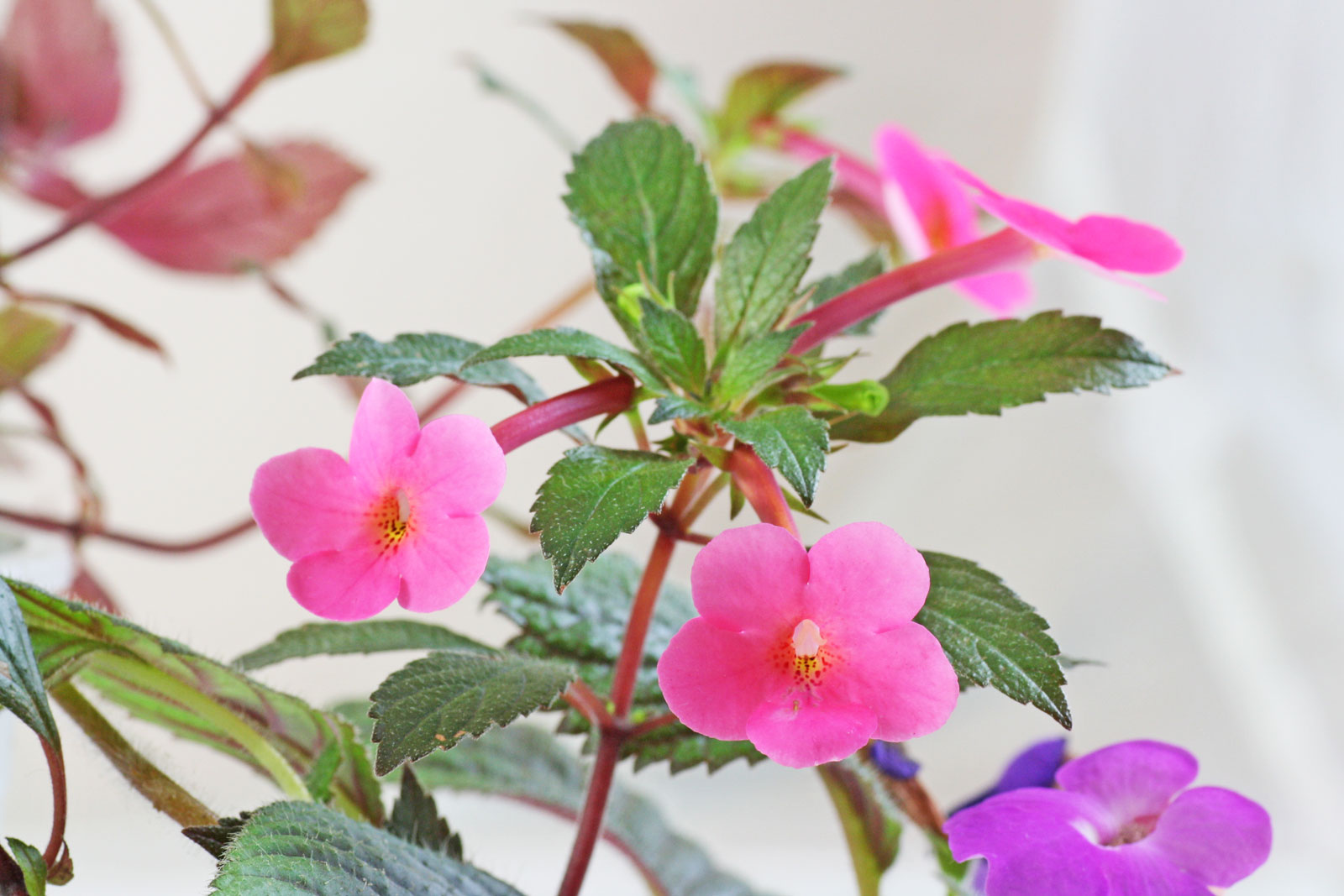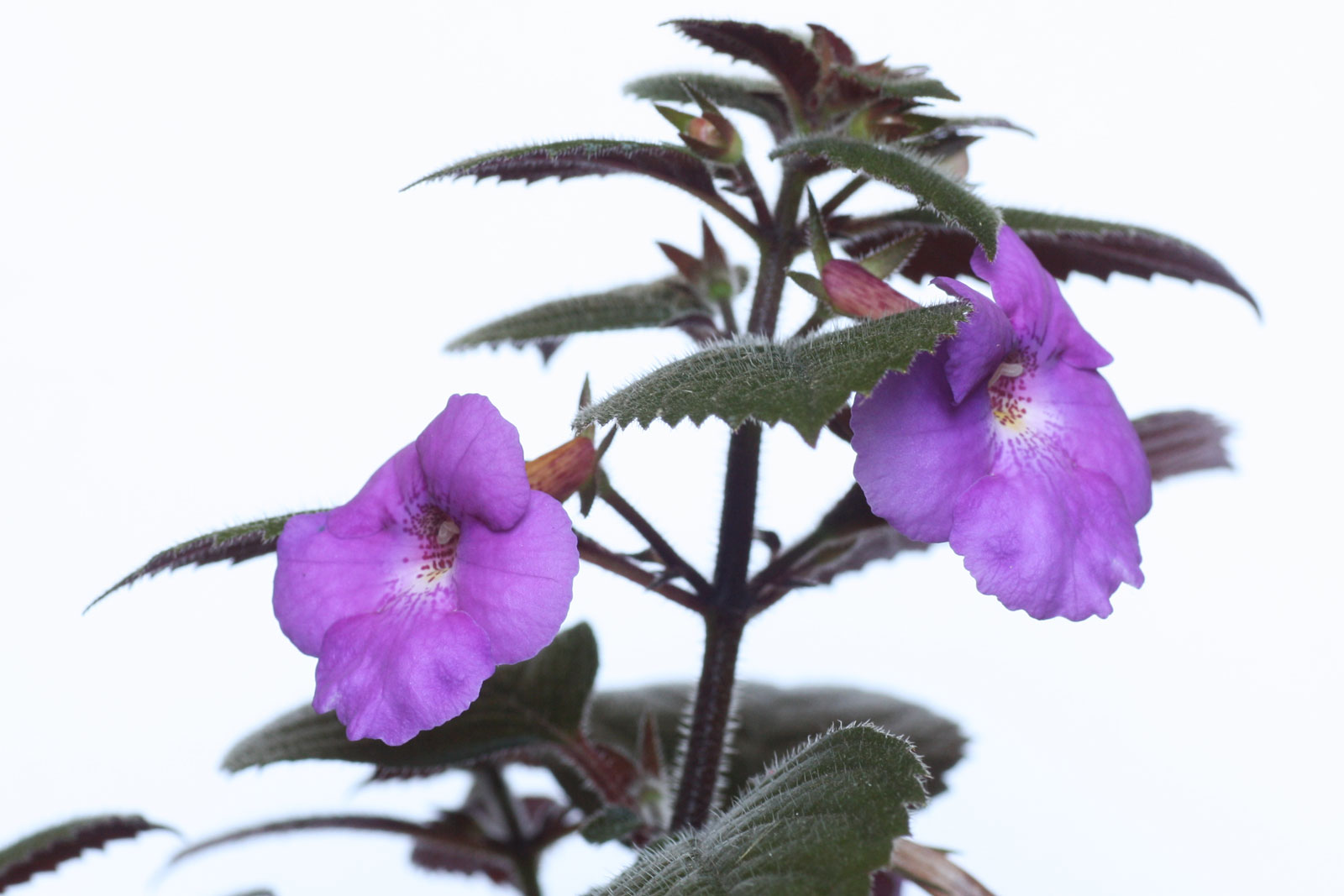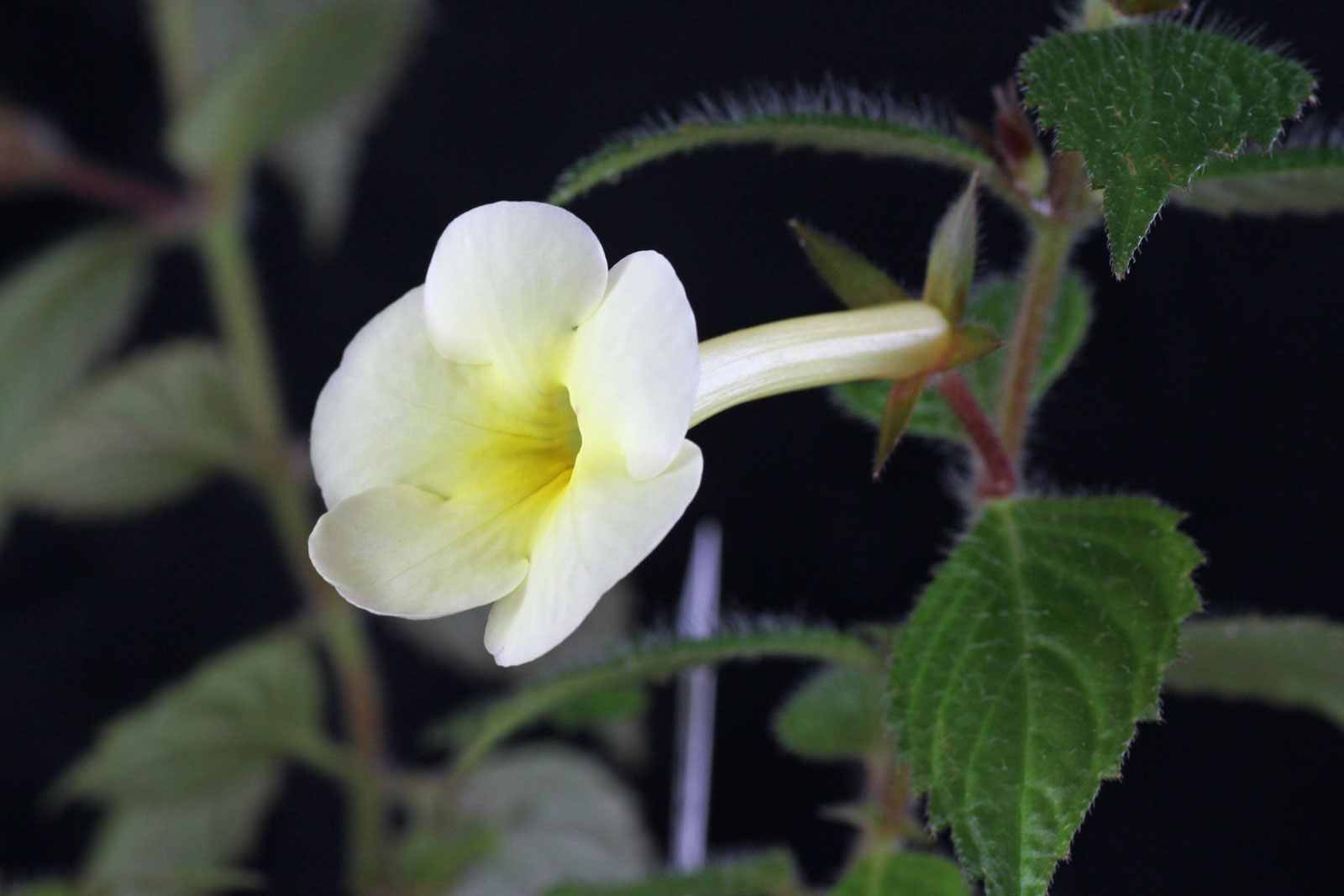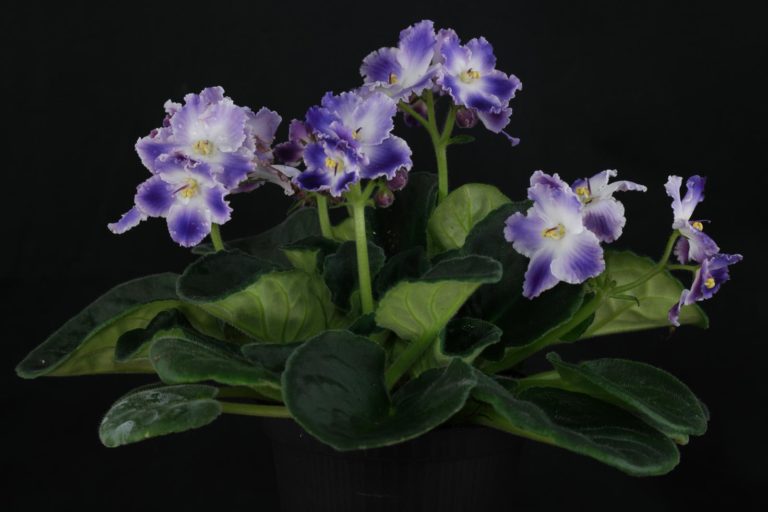The genus Achimenes belongs to the Gesneriaceae family and contains approx. 25 members, native to North and Central America. They are known under several common names such as Cupid’s Bowers, Hot Water Plants, Magic Flowers or Widow’s Tears.
Those plants aren’t that popular like the related African Violets (Saintpaulia). Probably because they are growing from rhizomes and going dormant during winter.
There are a lot of Achimenes cultivars available, flowering in white, red, pink, purple or multi colored. Some of them with netted or spotted throats. The green to bronze leaves go from smooth to slightly hairy.

Achimenes care
These growing instructions are based on my experiences with the Achimenes hybrids shown on these pages. With the natural forms different conditions can apply.
The members of the genus Achimenes differ from the related African Violets not only by their growth and flowering: they form rhizomes (subterranean offshoots) and remain dormant during the winter.

The cultural conditions during the growth and flowering period, however, are very similar.
Achimenes flourish best in a light location, with morning or evening sunlight. In the direct summer midday sun they should not be placed directly behind the window. A semi-shady location is also in order.
A usual flower or cactus compost can be used. The depth of the rhizomes is about two to four centimetres.
Until the shoots draw back in the autumn, you can water freely. The Achimenes hold as much water until the substrate can take no more. Excess water will soak off into the saucer under the pot. Please pour away this water after a few minutes. Stagnant water can lead to rotting of the rhizomes. Allow the substrate to moderately dry before watering again.
Half diluted liquid flowering plant fertiliser or fertiliser sticks can be used. I use the liquid version once a month from April to September. New or freshly planted plants need no fertiliser for the first six to eight weeks.
If the Achimenes start to yellow in the autumn, then reduce watering and stop fertilising. They can be cut down when they dry until the new growth in the next spring. The pot can be kept in a dark place at a temperature of between 10-15 °c/50-59 °f. During this time i just give them a drop of water about once a month.
When the new growth tips show in the spring, the plants can be brought back to their old location. Now is a good time for re-potting.

Propagation with cuttings
The simplest way of increasing achimenes is by leaf cuttings. Sliver off one or more shoots and put them in a glass of water to root. This is best in a warm location, at temperatures upwards of 20 °c/68 °f. Roots can then show after about 10 to 14 days.

Like a lot of other Gesneriads, members of the genus Achimenes can increase with leaf cuttings. Just separate the desired number of leaves and stick them into the substrate. I have used normal flower compost. This must be well dampened during the first four weeks, thereafter just evenly moist.
In order to increase the air dampness, you can place a freezer bag over the top of the pot. You must, however air the plants once a day. The ideal location to root the leaf cutting is light, but not in direct sunlight, at temperatures from 20 °c/68 °f.
The roots form at the end of the leaf stems.

Achimenes cultivars
Achimenes “Blue Sparks” is a compact and dwarf growing cultivar, flowering in white with purple and blue sparks. It’s also offered as Achimenes “Blue Spark”.

Achimenes “Peach Blossom”

Achimenes “Pulcherrima”

× Achimenantha
Hybrids (crossings) between members of the genus’ Achimenes and Smithiantha are called × Achimenantha.


